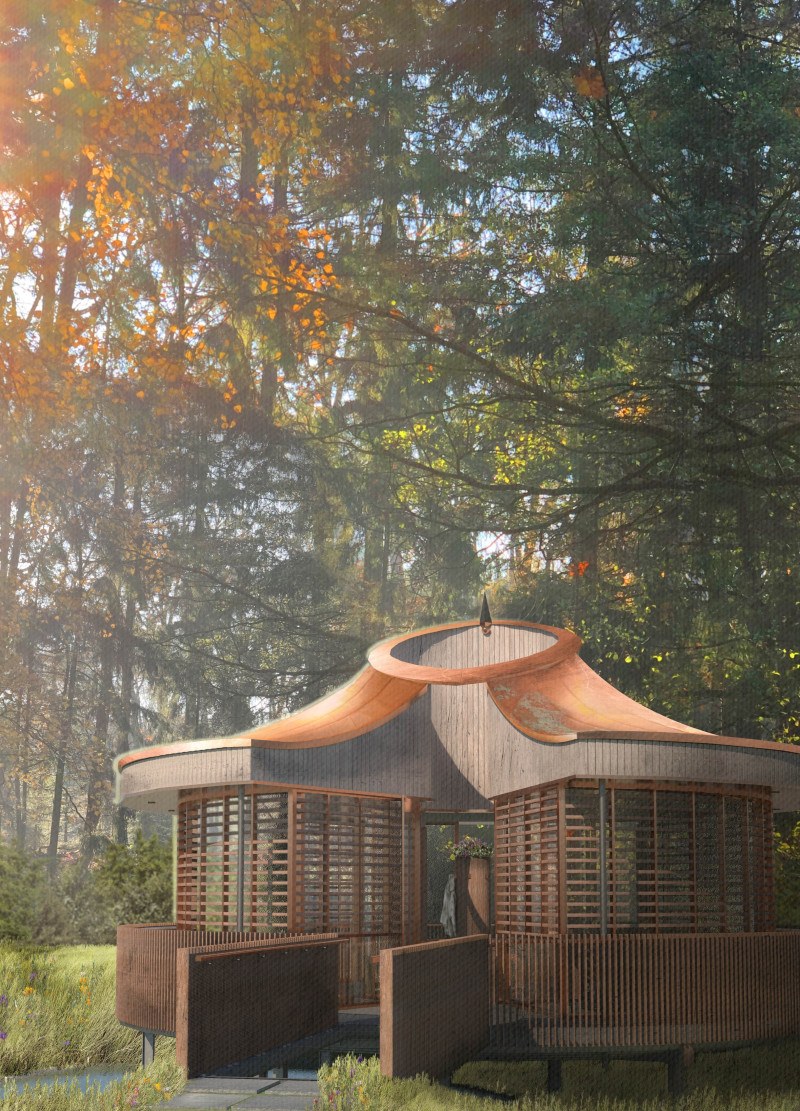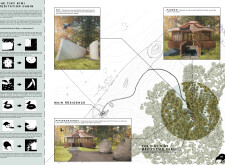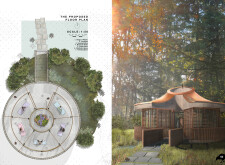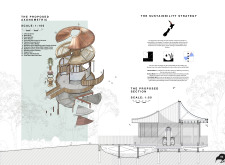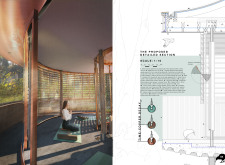5 key facts about this project
The Tiny Kiwi Meditation Cabin explores the cultural story behind the Māori legend "How the Kiwi Bird Lost Its Wings." Located in New Zealand, the cabin serves as a place for meditation and reflection, encouraging visitors to connect with nature. The design draws on themes from the legend, particularly the ideas of sacrifice and transformation, as expressed through the experiences of various birds.
Design Concept
The layout of the cabin takes visitors on a journey. The entrance creates an uneasy feeling, which invites contemplation. Two planes of white walls guide people through, reflecting the tension present in the legend. Once inside, the cabin promotes a sense of peace, allowing for introspection and connection with the surrounding environment.
Spatial Organization
At the center of the cabin is a significant atrium that serves as a gathering point. This area allows natural light to fill the space, encouraging visitors to look upward, reminiscent of the viewpoint of Tānemahuta, who admired the forest from below. The open layout creates a welcoming atmosphere that invites individuals to engage with the natural world outside.
Materiality
Polished concrete makes up the flooring of the cabin, illustrating the impact of invasive species within the environment. This choice adds a layer of meaning to the space, reinforcing the connection to nature and the challenges it faces. The design complements the meditative focus of the cabin while grounding it in reality.
User Experience
The cabin features sculptural seating that challenges comfort. Initially, these seats may feel awkward, but they encourage users to become aware of their bodies. As one adjusts, relaxation follows. This design approach aligns with the story of the Kiwi, emphasizing adaptation and care for the environment.
The cabin also incorporates a sustainable water filtration system, which highlights its connection to the local ecology. This detail enriches the design, aligning with the larger narrative of nurturing and preservation evident in the story. Each aspect contributes to a holistic experience, drawing visitors into a deeper appreciation of both culture and nature.


